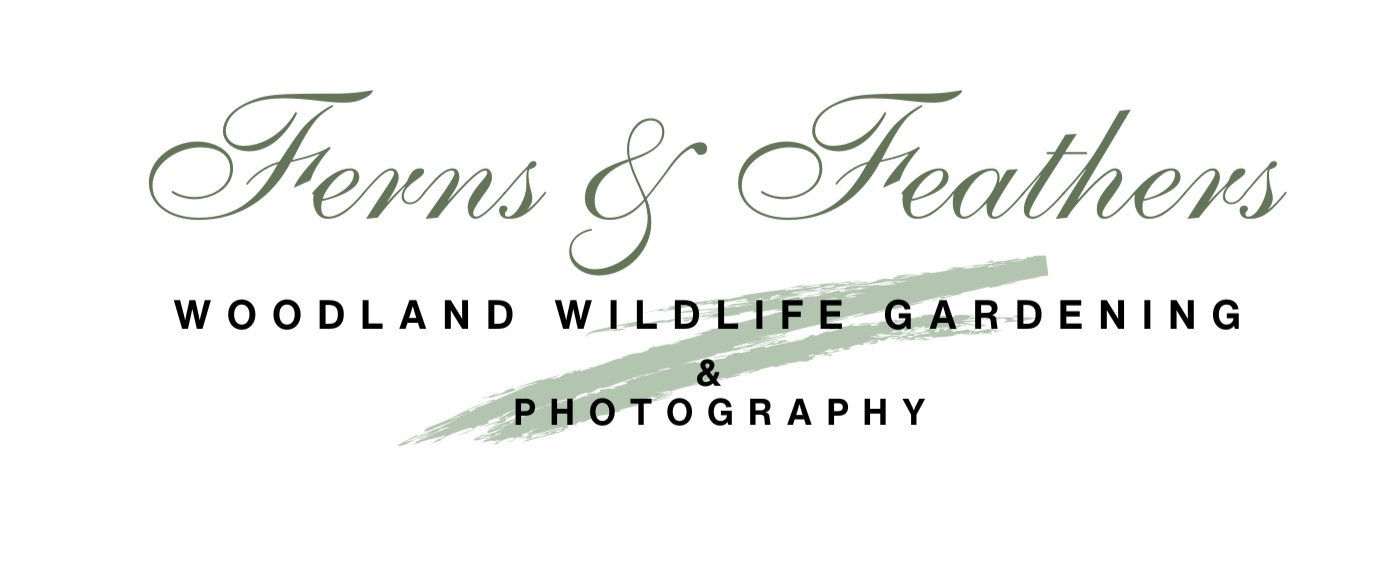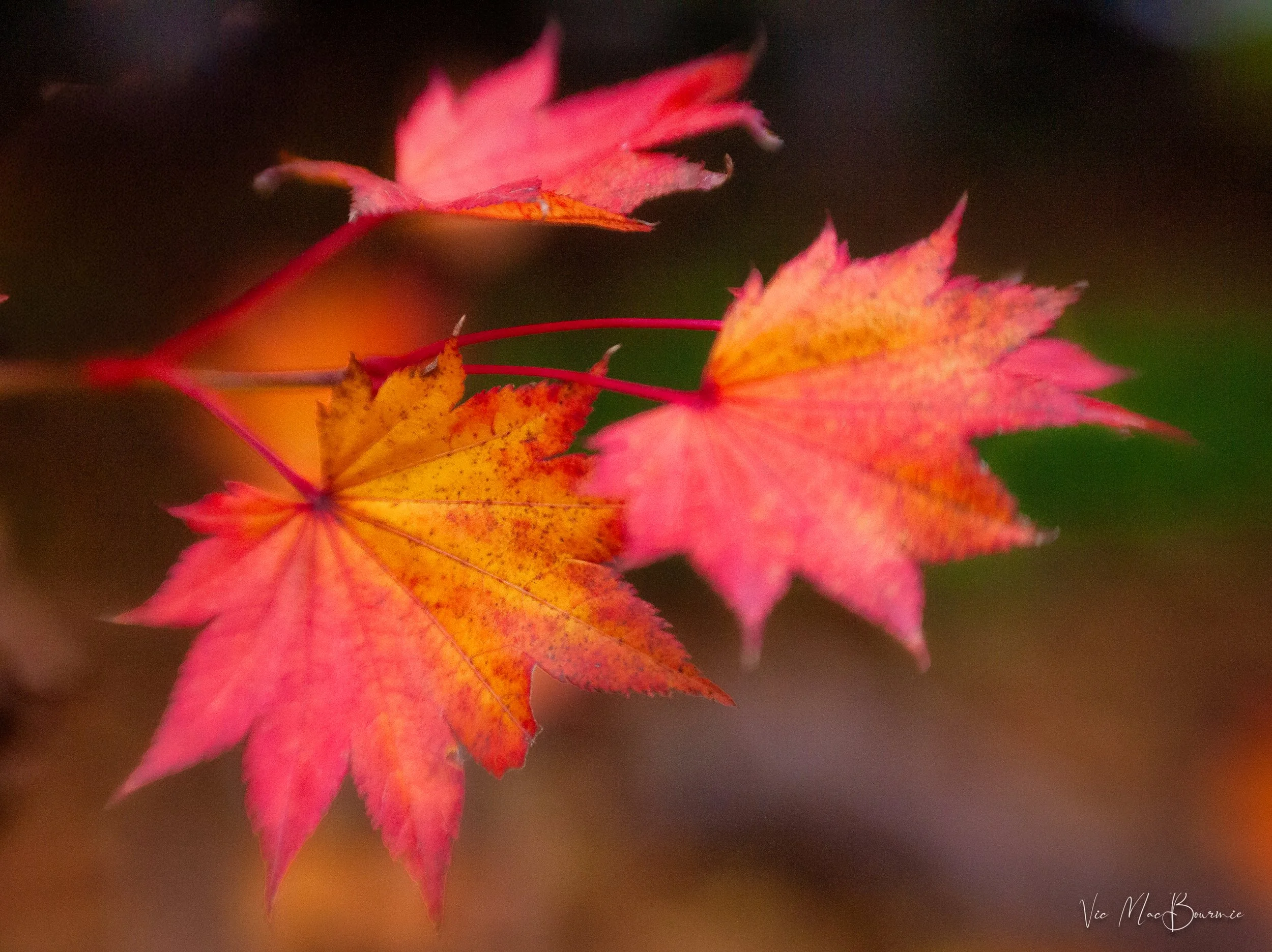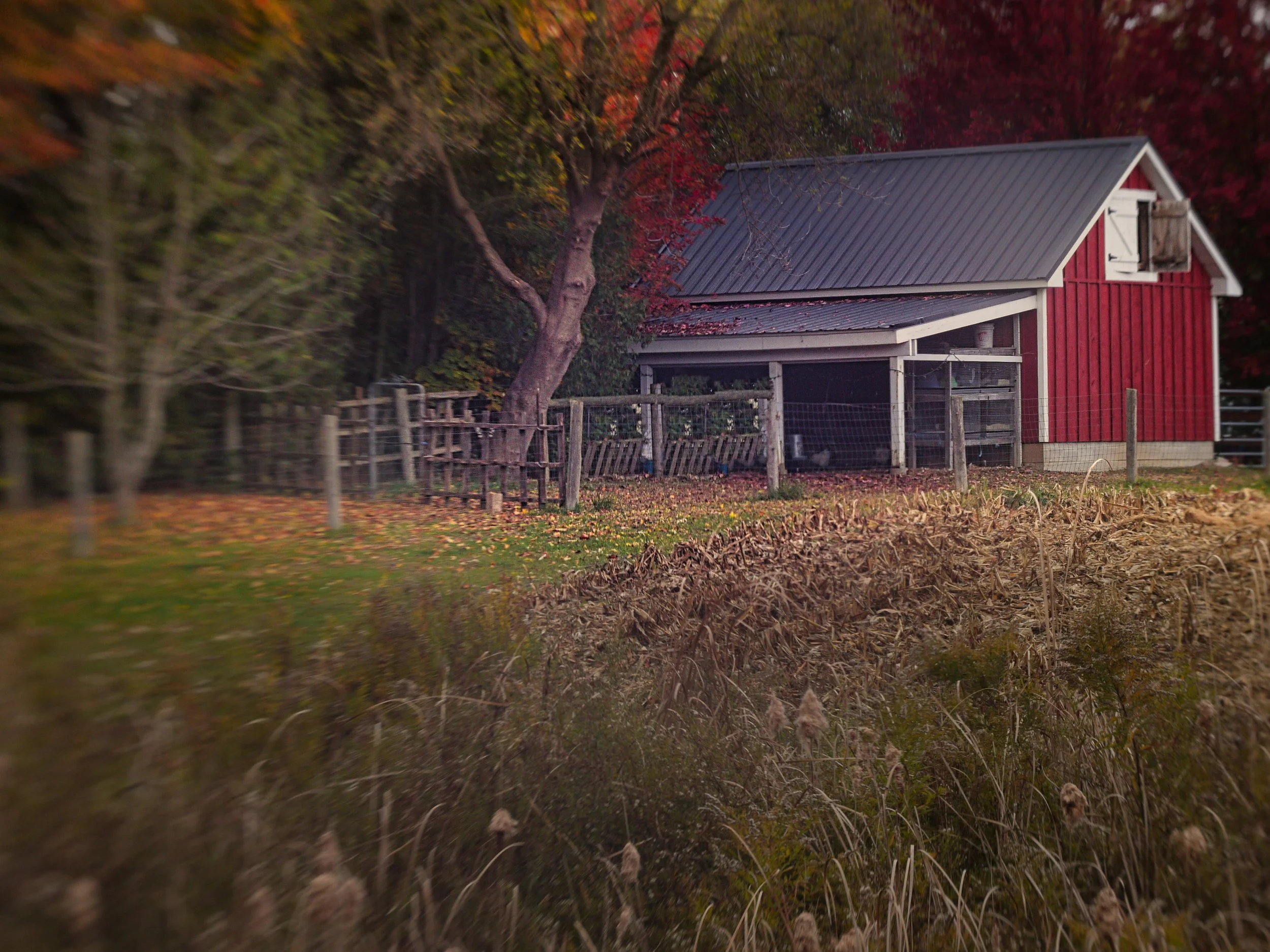Embracing the beauty of the fall woodland garden
The native grass Northern Sea Oats is a favourite of mine to photograph in fall. The lovely warm colours include beiges and muted purples. The lovely arc of the branches add to the effect and the small zone of sharpness from the Lensbaby adds to the delicateness of the overall image. Northern Sea Oats is an important food source for birds throughout the winter months. Last winter, they proved to be a favourite food source for our wild turkeys that visited on a daily basis.
Focus on plants for best fall colour
Full fall colour can be so fleeting.
If you’re not paying attention, all those beautiful reds, yellows and burnt oranges disappear into mounds of dried, crunchy leaves on the garden floor.
And that’s okay. The leaves carpeting the woodland floor provide a home for overwintering insects and their future offspring, as well as foraging birds looking to supplement their diet of seeds and berries.
Too many of us choose to stay inside at this time of year thinking the garden is all tucked in for the season. Experiencing late fall in the woodland, however, can be an extremely satisfying experience. Just breathing in the earthy aromas and the cool autumn air is a real joy. Add a hot chocolate or a large mug of coffee and your best four-legged friend at your side, and it’s hard not to appreciate our change of seasons.
Even in early November there are still flowers remaining on our Hydrangeas. These warm pinkish/purple tones give way to paper-thin beige flowers later in fall and through the winter months. Even as the last remaining colours fade, the plants continue to be impressive. The soft, ethereal look that the Lensbaby Composer lens provided here creates a lovely, delicate late fall image.
Now, if experiencing late fall in the woodland garden is a real joy, capturing beautiful fall images takes the enjoyment to an all new level.
I experienced that enjoyment this week (early November) when I decided to pull out the Lensbaby Composer lens to give it a much-needed workout to capture the delicate tones of the late fall woodland garden.
The Lensbaby Composer lens. Notice how the lens swivels on the ball socket. This gives the photographer the ability to move the focus point around the image.
For those who may not know about the Lensbaby line of lenses (Amazon link), you can check out their informative website here. If you are looking for a great deal on a large selection of Lensbaby lenses and accessories, be sure to check out the used options on MPB.com
In a nutshell, the minds behind Lensbaby, unlike most lens manufacturers, are not concerned about achieving extreme sharpness throughout the image. In fact, their focus is on creating soft, ethereal images where the photographer takes control of narrow bands of sharpness while the surrounding areas of the image is allowed to go soft. Depending on the f-stop chosen, the depth of sharpness increases or narrows.
Strong fall colours can still be found in the garden in November. Here, a trio of leaves from our Japanese Maple (Moonglow) show off their fall colour. It’s hard to imagine these leaves earlier in the year sporting their vibrant spring chartreuse colouring. This rather expensive, slow-growing Japanese Maple performs from early spring through late fall and is certainly one to consider for your woodland garden, especially if it is on the smaller side. Notice how the Lensbaby Composer’s sharpness is so restricted that only half the leaf in the front is sharp while the remaining half is rather soft.
Lensbabies are ideal lenses for creative flower photography as well as portraiture, but they have their place in landscape images especially fall landscapes.
The Lensbaby Composer is a completely manual lens and requires a little work getting the focus the way you want it. I like to use a combination of a sturdy tripod and a Hoodman Loop to nail the narrow band of focus. The Hoodman Loop also helps me see the image on the back of the LCD screen, especially in bright lighting conditions.
The following are just a few images of my favourite fall-colour woodland garden plants taken this fall with the Lensbaby Composer.
More information about the subject is included below each image. If you are looking to add fall colour to your garden, you could do worse than putting these plants on your list of purchases in the spring. Of course, there are many other plants that offer bold fall colour to our landscapes, but these plants are sure winners in our garden.
Even in November, there is still plenty of colour in the garden. These American Viburnum leaves can be showstoppers in late fall. Although the birds and other garden wildlife already devoured the bright red berries, the leaves continue to put on quite the show. If you are looking to add late fall colour, this native, berry-producing shrub that wildlife love is an excellent choice.
If you are looking to add a punch of purple to your garden, consider the beautyberry bush with its outstanding late fall crop of purple, pearl-like berries that provide backyard wildlife with another winter food source. Not only are the abundant berries an exciting addition to the fall garden, the leaves, with their purple veining, add their own hit of purple to the garden’s pallete.
Another Hydrangea shows off its mauve fall colour and small berries.
The delicate branch of another Japanese Maple is captured here with the Lensbaby Composer. Notice how the focus of the lens is not to capture the scene in ultimate sharpness, but to create a softness that is particularly appropriate for this scene. The out-of-focus background, with hints of pastel greens, add to the overall mood. This is the more common Japanese Bloodgood Maple. One of its fall features is that it drops almost all its leaves in a single day and creates a carpet of bright red leaves as a natural ground cover.
Don’t forget to look on the forest floor for lovely fall colour at this time of year. Larger maples, oaks and tulip trees provide fall colour in both the upper canopy and later when they drop to the forest floor. I captured this lovely native Sycamore tree leaf among the ferns and other leaves. Whether you choose to just experience the fall garden, or capture it with your camera, the potential to squeeze just a little more out of fall in the garden can be a rewarding experience.
How can we forget the colours of our Dogwoods in fall? This Cornus Florida leaf is another standout in the late fall garden adding to the trees’ year-round interest beginning in spring with its incredible flower bracts, through early fall with its red berries and rounding out the year with its spectacular fall colours. The native dogwoods as a group are an excellent addition to any fall woodland garden.
One last image I wanted to show readers. Although it was not taken in the garden, it shows the interesting effects possible with the Lensbaby Composer in more of a landscape image. Lensbaby chose to feature my image on its website to illustrate how the Lensbaby can take a more traditional image and help the photographer obtain a more creative one.
MPB.com is an excellent place to either trade in your previously used photo equipment or purchase dependable used camera gear, whether it’s your dream camera or lens. For a great selection of Lensbaby lenses from MPB, click here.
Image shows a Japanese Maple covered in a late fall snowfall. This image was not taken with the Lensbaby but I could not resist adding to it.













